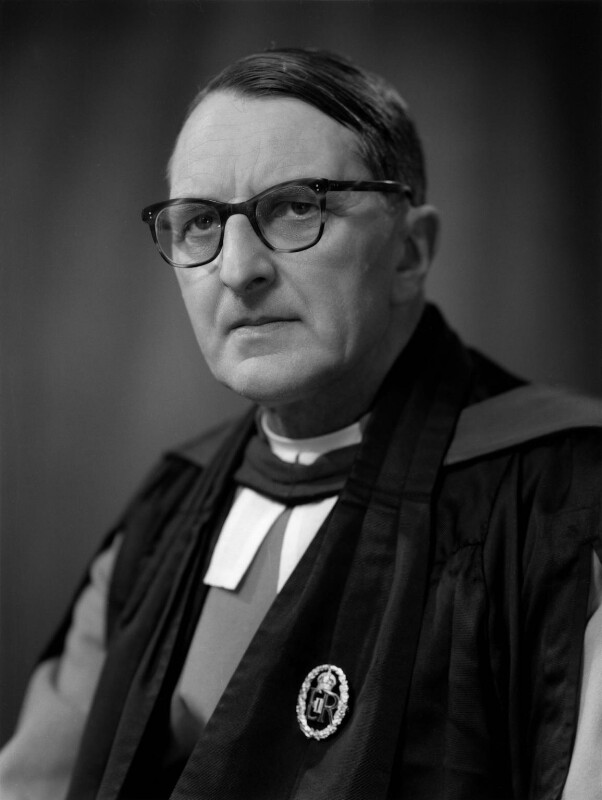
The Very Reverend Ronald Selby Wright, 1908-1995
[used under Common licence from the National Portrait Gallery]
Ronald Selby Wright
We can also see, from some of his famous wartime radio talks, that this experience must have had a strong influence upon his work at the BBC. Finally, while Padre to the 7th/9th Royal Scots (the Dandy Ninth), Selby Wright was billeted in Waverley House, Gullane, from November 1940 to October 1941. I think he passes the test for inclusion.
Born in 1908, Ronald was a Glaswegian, though he never regarded himself as such since he moved to Edinburgh aged three. He attended university and vocational training in the city and, by and large, stayed put thereafter. After his training he spent a brief spell in St Mungo’s Cathedral, Glasgow, and was then appointed Assistant Minister at Edinburgh's Canongate Church in 1937. This rundown church, nestling in the heart of an area of high deprivation, was where Selby Wright was to practise as a minister for the next forty years.
St Giles and the Canongate Boys' Club
At Canongate Church Selby Wright was faced with a host of deep-rooted problems: the fabric of the church itself required significant restoration and the area it was located in was hardly awash with cash; additionally, many of the youths of the area were raised in the destructive grip of poverty. That Selby Wright found the means to tackle both problems, in addition to a host of additional ones, was a tribute to his doggedness, ability and Christian care.
As a student in Edinburgh, Ronald Selby Wright had been Warden of St Giles’ Boys’ Club, as well as serving as a cadet officer in the Royal Scots. Both strands of this phase of his life were ultimately to converge in East Lothian. The useful experience he had had of running the Boys’ club at St Giles was put to good use when he established one in the Canongate too. As he put it in his book, "Our Club", the club was formed to assist young lads caught up in the "…struggle, unemployment, grim overcrowding and real poverty…" of inner Edinburgh life in the twenties. (1) In his autobiography, "Another Home", he wrote, "In many ways the people of Canongate were examples of the survival of the fittest." (2)
There must have been a measure of the Victorian about Selby Wright in that he clearly believed that a Boys’ Club was a means whereby its members could socialise in safety, pursue healthy outdoor sports and through which he could minister to his flock’s youth freed from the constraints of the Sunday pulpit. Faith, sport and companionship appear to have featured strongly in the ethos and fabric of the club.
Early days at the Canongate
The Canongate Club had its origins in the St Giles' Boys' Club. The former began in St Giles in 1927 where it shared premises with other organisations, a situation Selby Wright was very keen to alter. The story of how alternative premises were discovered in the St Thomas' Mission Church in Gullan's Close in the Canongate in 1931 is a tale of hope, faith and luck. The building was run down, the gas fitments dangerous, rats omnipresent and dirt abounding. Despite the poverty of the club (the annual rent was £20 and the club didn't have it), the clear need among the boys of the area was all powerful and the move went ahead in hope. With adult guidance, the boys worked hard and the building was gradually improved and rendered safe to use. A mystery donor solved the rent problem and the club was up and running.
In 1936/7, after Selby Wright had become the minister at Canongate Church, the Canongate Club was moved to the old manse in 3 St John's Street. However, during the war years the scarcity of adult leaders meant that the St Giles and Canongate clubs had to meld together and they continued meetings as one.
1. R. S Wright, "Our Club: being a short sketch of the Boys' Club in the Canongate," (Oliver and Boyd, Edinburgh, 1969), p.15
2. R. S Wright, "Another Home," (Blackwood & Sons, Edinburgh, 1980), p. 37
East Lothian and the Canongate Boys' Club camps
Selby Wright recognised the need for the boys to experience holidays well out of Auld Reekie and its confining streets. The open spaces and fresh air of East Lothian beckoned and the first ever summer camp was mounted in the grounds of Pinkie House in Musselburgh. Not quite in the country but a start. A much larger effort then went into organising a camp in Spott in 1928, described as "…a never-to-be-forgotten experience." (3) The character of the boys at the camp can be deduced from one episode, described in Selby Wright's book about the club, when some of the boys were rewarded with 6d (2.5p) apiece for their public-spirited efforts to return some wandering horses to their field. Only later did it emerge that the boys had let them out in the first place! Typically for many a summer camp in Scotland, this one ended by being flooded out.
Reed point, Cockburnspath
In 1931 the camp took place at Reed Point near Cockburnspath. Here the basics of future camps were set, largely in imitation of Baden Powell's Boy Scout movement. There were cooks, Camp Wardens and Quarter Masters. There was tent inspection, hymn singing by the camp fire, swimming in lakes, Pease Bay or the harbour at Cove, and, every evening, there was the lowering of the flag ceremony at dusk. There were walks aplenty, story readings, games, sing songs, anything and everything; all imbued with a strong Christian flavour. The boys weren't just to have their horizons widened, they were to be schooled in life and sent off with a strong moral code of behaviour. A number of camps took place at Reed Point until the war interrupted them and the Club began to camp with other Boys' Clubs from Edinburgh.
3. R. S Wright, "Our Club" (Oliver & Boyd, Edinburgh), p.21
"Our permanent camp at Skateraw is like a 'room' in the Club… It is there that we have learnt to live together as a family in the best and sometimes the hardest ways and at all seasons of the year - in the freshness of spring, the heat of the summer, the mellowness of autumn and, perhaps best of all, the cold gales and sometimes snow of winter. … Skateraw … [became] to many of us a second home." (4)
Apparently, Selby Wright and Jimmy Dalgleish had searched for and found the location for a camp along the East Lothian coast in 1935. Mr David Bowe, a local farmer, lent the club a patch of rough ground on Chapel Point, near Skateraw harbour, where he suggested they could build a hut. That hut, isolated and lonely and nicknamed the Scott Hut, stood on the promontory till it was moved to a more extensive area close by in 1947. There, above the lime kiln, it was eventually to be joined by a Nissen hut and one or two additional useful buildings, pathways and a network of local features, which, over time, were all given their own particular name by the club. Here the club would meet at all times of the year and here Skateraw came to justify the description Selby Wright wrote and which is quoted above.
4. R. S Wright, "Our Camp", p.47.
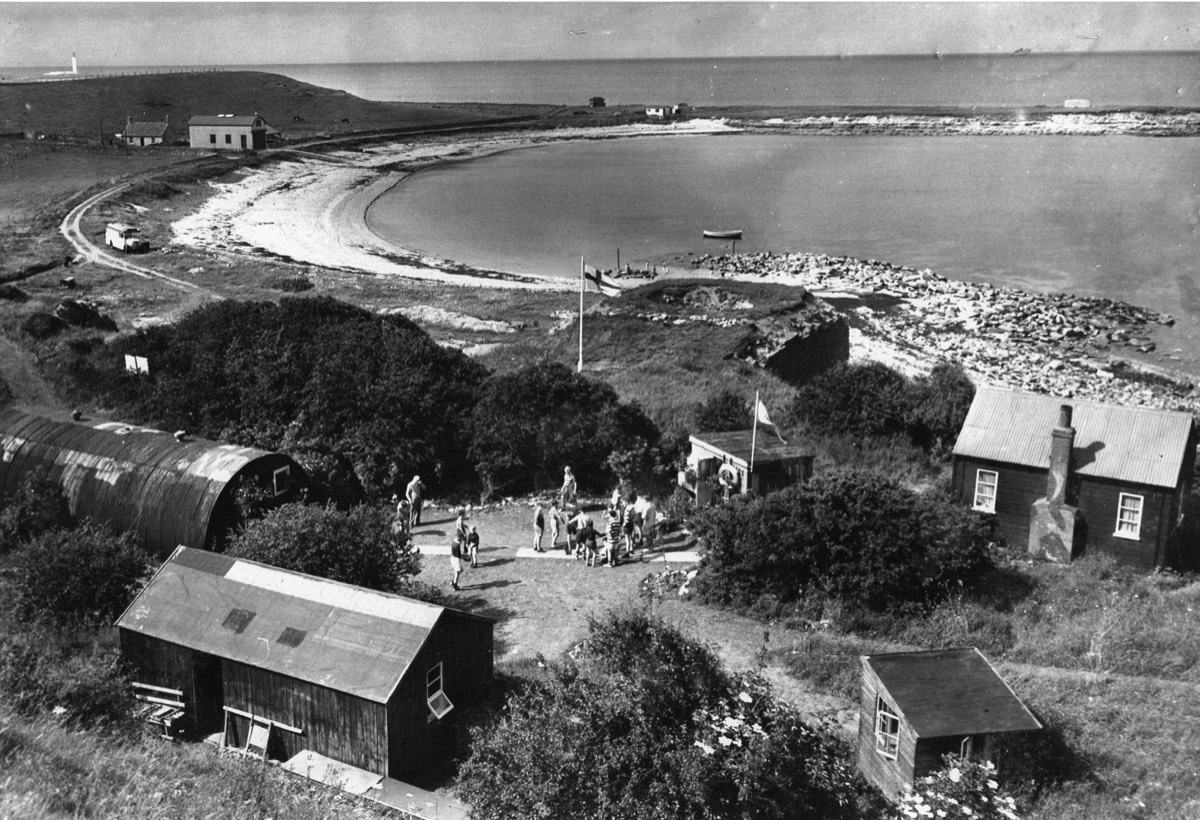
Skateraw Camp.
(Courtesy of Mike Bowe)
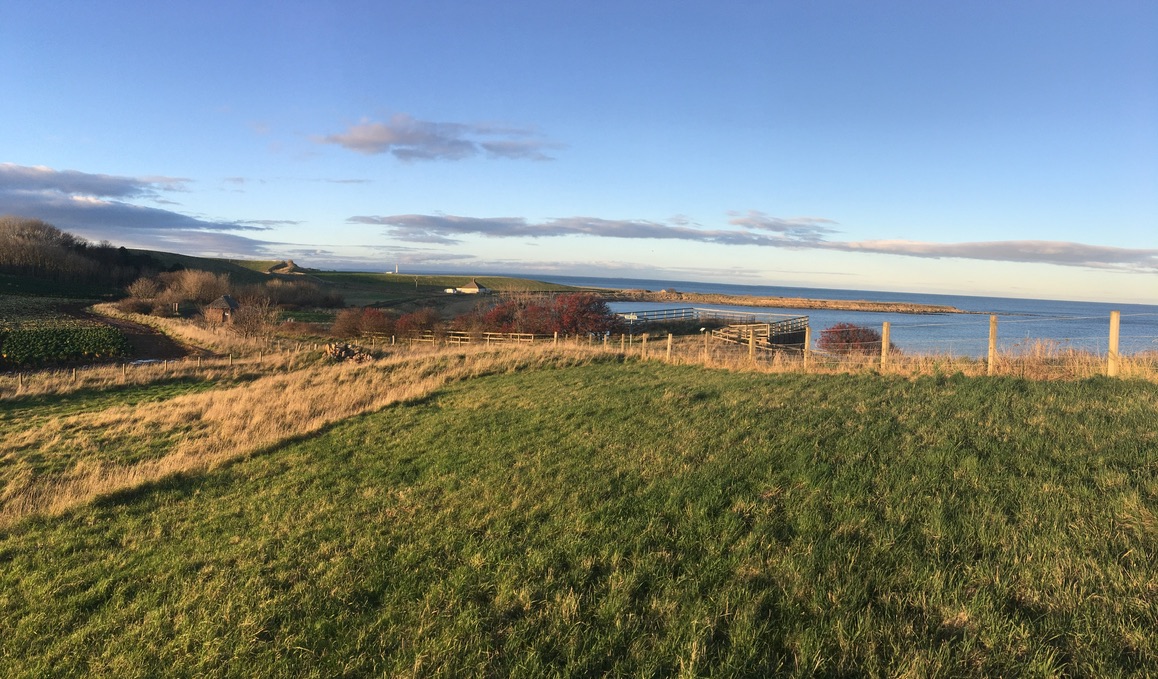
The former site of the Canongate Boys' Club camp at Skateraw.
(D. Haire)
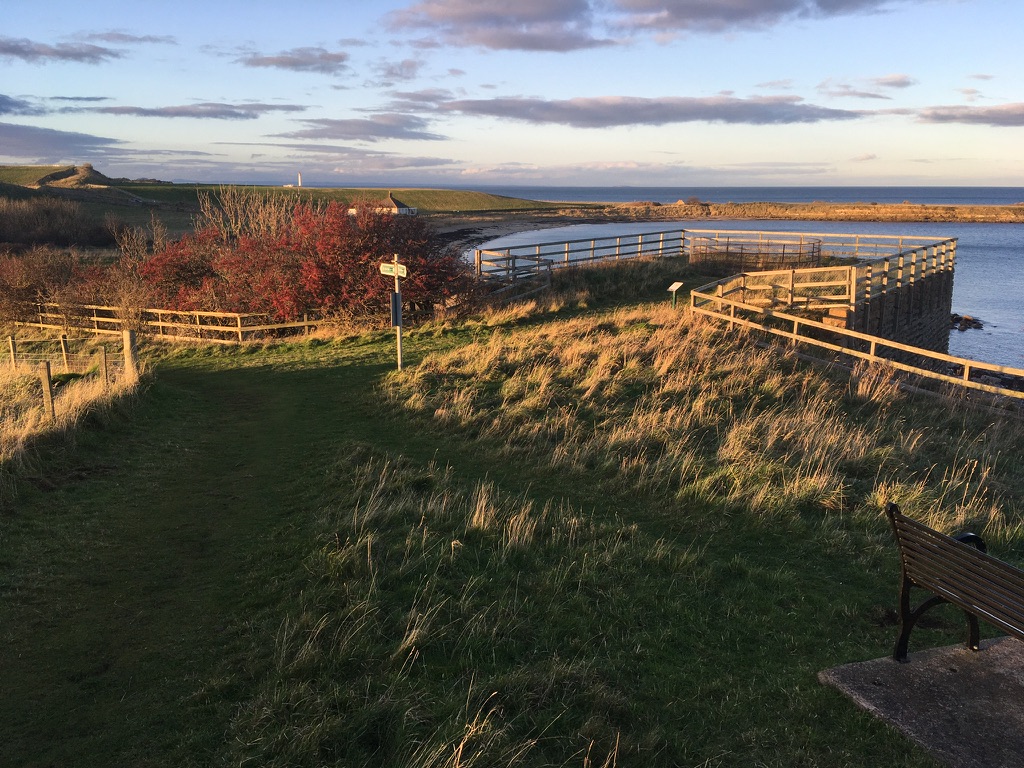
Selby Wright always worked hard at giving his Canongate boys every opportunity to widen their horizons. He repeatedly introduced the club members to representatives of all walks of life, including some well known sportsmen and schoolboys from other schools in Edinburgh. John McVie, who became a very good friend of Selby Wright's and was in addition a fellow officer in the 7/9 Royal Scots, gave these brief accounts of his stay at Skateraw:
"It must have been … in 1938 when I was one of at least four or five boys from Edinburgh schools invited to attend a weekend camp at Skateraw. I remember the faces but can't name the boys. …Ronald is standing on the back row with glasses. The tall thin man on the back row is Melville Dinwiddie; second from left in front row (with centre parting) is Tom Curr, cartoonist from Leith for the Evening News." (Source: personal letter)
He amplified this a little in another letter:
" I was a guest at a weekend camp with three others representing, I think, four other senior pupils from Edinburgh Schools (R.H.S., Watsons, Heriots and Stewarts or Edinburgh Academy) - the idea being to get to know the Canongate boys (as we did) and have sports and walks in the Lammermuirs. Also as guests I remember were Tom Curr…Hentie Davidson (The very Rev. and Moderator of the General Assembly years later) and Melville Dinwiddie, Director of BBC Scotland. I think he may have had a hand in proposing Ronnie for the 'Radio Padre' job." (Source: personal letter)

A number of Edinburgh Public School boys who came to stay with the Canongate Boys at Skateraw, probably in 1938. John McVie is pictured on the left.

D. H. Interviewing John McVie (on left) by the memorial.
The War Years
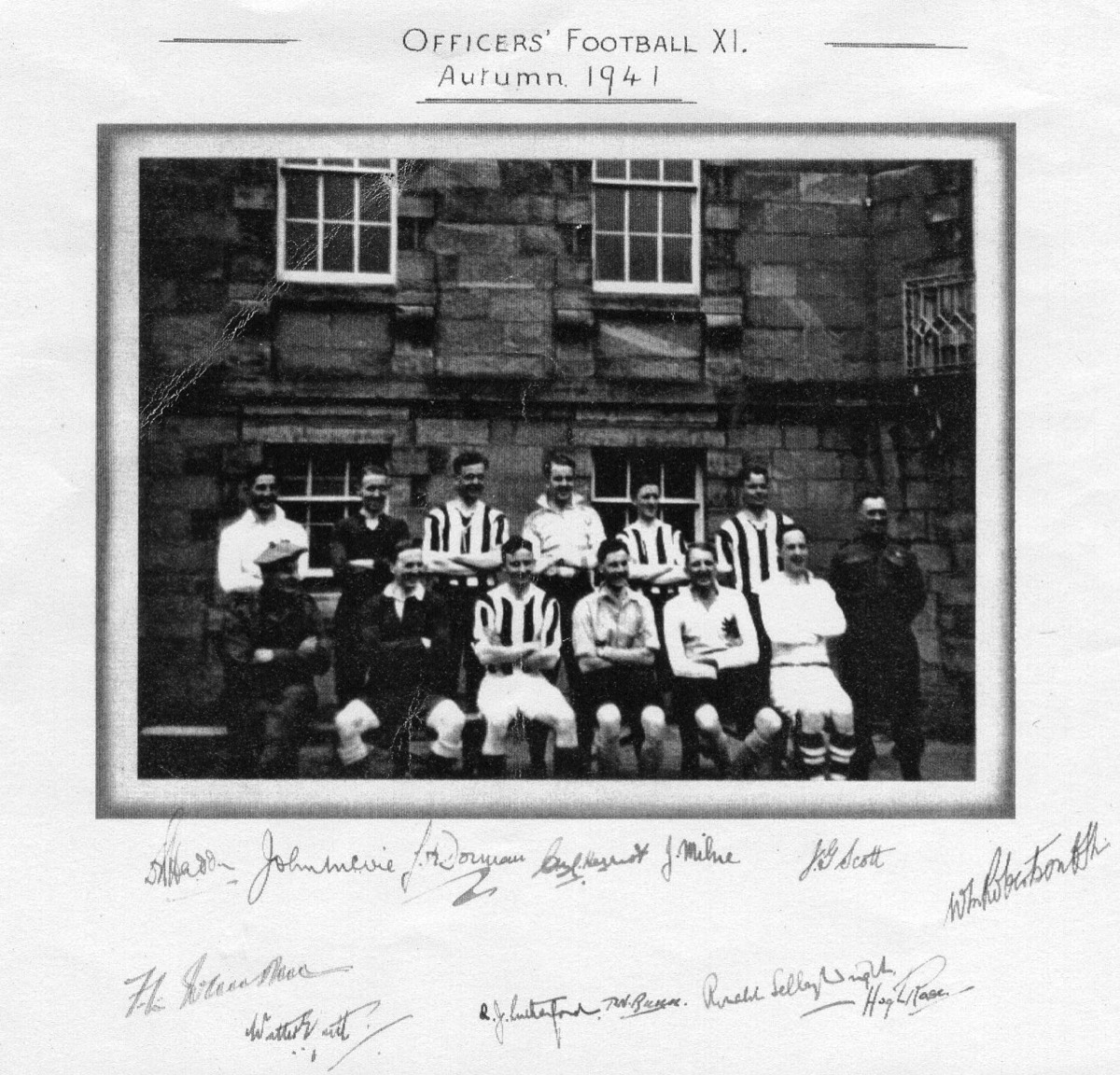
Photograph of Selby Wright (front row third from the right) in the 7/9th RS officer's football team, August 1941. Second from the left back row is John McVie, a well-known solicitor and former Town Clerk of Haddington. Hugh Rose is front row, first seated on the right.
As mentioned above, Selby Wright had been in the Territorials before the war and, when war began, he joined up and became the Padre of the 7th/9th Battalion of the Royal Scots, a battalion nicknamed the 'Dandy Ninth' due to their smart turnout in kilts. He crossed to France with the B.E.F. in June 1940. When the latter was surrounded at Dunkirk, he managed to avoid capture by the skin of his teeth and was evacuated via Cherbourg on one of the last naval ships to get out.
Selby Wright and the 7th/9th Royal Scots first came to Norfolk after their escape from France and were then posted closer to home for many of the men, to East Lothian. While they were ostensibly guarding the county's airfields, regrouping and recuperation were probably high on the list of objectives since the 7th/9th had returned with little more than their uniforms and Bren Gun Carriers.
Toc H, Gullane
The men were billeted in Gullane and Archerfield while Selby Wright moved into Waverley House. Aided by John McVie among others, he set up a branch of Toc H in Gullane. Toc H was an organisation set up during World War One by the Reverend Tubby Clayton to cater for the social needs of the troops. Toc H is named after Talbot House, reduced to TH by the troops and rendered simply Toc H in wireless 'speak'. All sorts of entertainments and relaxations were provided through Toc H. It was a haven of peace and the troops were even treated to a visit from the Crazy Gang.
The range of activities Selby Wright was involved in can be see when we take a look at his engagement diary (keeping personal diaries being, of course, forbidden). It gives us a flavour of wartime in East Lothian:
1941
Jan
10 - HQ Coy Dance.
11 - Film at Marine Hotel Garage, Gullane (the former Fire Service Training Station).
14 - Gullane Womens' Guild.
15 - Dr George MacLeod Toc H (of Iona Community fame).
17 - C Coy lecture. ENSA concert.
21 - C Coy ENSA.
23 - Beverley Nichols Toc H 7.30 (An author).
25 - BBC 10.30.
26 - Canongate 11.00.
27 to 1 Feb - BBC ( to give his daily five minute talk. Driven to Edinburgh by L/cpl McRea from Musselburgh).
28 - Boys' Club Canongage 6.00.
29/30 - Roy Sanderson (Ass. Min with Selby Wright in St Giles and an organiser of Toc H in Scotland).
31 - Boy's Club. Beverley Nichols.
Feb
2 - 9.45 A Coy 7/9 Royal Scots. 10.45 4th KOSB (Two Sunday services).
7 - 5.15 RAMC Col Middleton's farewell party (he had been posted overseas).
8 - Rose's for dinner (Col Hugh Rose. He continued to live in Gullane in Hill House after the war and was one of the officers' football team shown in the photo above).
16 - 4.30 Judy Campbell (singer with ENSA).
17 - Mrs Rule (wife of minister of Gullane Church. Her husband saw service in the Far East and escaped Singapore).
24 - 6.00 Lecture Marine Hotel.
28 - Mrs Burnett Smith (Authoress who wrote under the pseudonym, Annie S Swan, and lived at Aldersyde. Died 1943).
March
2 - 8.30 RAMC (Gifford); 9.30 A Coy (Aberlady); 10.30 4 KOSB (Gosford); 11.30 7/9 RS (Gullane); 12.30 RS (Archerfield). (All services).
6 - Theatre (Rebecca).
7, 21, 22 - Film Shows (Garage of Marine Hotel, Gullane).
23 - King's day of prayer. 9.15 RAMC; 10.30 KOSB; 11.15 7.9; 12.30 AG; 1.30 Canongate.
26 - Battalion dance.
April
2 - Battalion dance.
3 - ENSA Film Unit.
13 - Easter. 2.30 Canongate.
20 - 6.00 Gullane church.
25 - Lecture Gifford.
26 - Police match C Coy.
May
3 - Rugger Archerfield.
5 - Bowls night.
6 - 8.00 Toc H.
8 - HRH Duchess of Gloucester (Hon Col KOSB).
9-15 - Leave.
22 - Scottish Church Society meeting.
June
4 & 11 - Toc H.
7 - Btn sports meeting.
14 - 2.30 Gullane House. Gifford overnight.
15 - 9.30 Gifford; 10.30 Aberlady; 11.15 Gullane; 11.50 Archerfield; 1.00 lunch at Archerfield; 3.00 Dunbar. (All services).
19 - Dr Welch (in charge of religious broadcasting at the BBC in London. Dr Dinwiddie, head of BBC Scotland, was also present. The proposal for a Radio Padre was discussed and Selby Wright took up the post in 1942).
21 - 3.00 McRea wedding at Acheson House (his driver).
July
3 - 6.30 Mrs Rule.
4 - Sing Song Party
5 - Football march. Officers v Bn at Archerfield.
8 - Toc H.
18 - Concert at Gullane
August
11-18 - Leave.
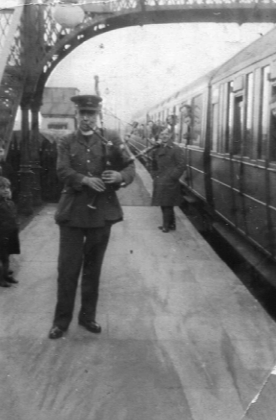
Selby Wright piping off 600 Squadron RAF at Drem station, 1942. The children, just visible on the left, were John and George MacDonald who lived in Station Cottages, Drem. Photo taken by Cpl R. Atkinson.
In 1942 his ability to reach the hearts and minds of people through the simplicity and conviction of his style had been recognised and it was suggested that he could usefully be employed as a travelling padre able to visit isolated detachments and then to 'speak' to them later via radio broadcasts. He'd had experience of something similar when he had produced short radio talks with the Canongate boys.
Initially, he was very reluctant, since it would mean having to leave the Dandy Ninth and serve in England. Before long, however, he had decided it was the right thing to do and so successfully did he do it, that his years at the microphone earned him the popular nickname, the 'Radio Padre', used wherever the wireless took his words. His first Radio Padre talk was on 1st April, 1942. His radio experiences even went to the extent of brief talks during performances of Ack Ack Beer Beer, a variety show for the troops.
The range of his talks was great and he often feared being able to sustain the creative effort. He talked of homes, hearths, relationships, freedom, faith, being browned off, hopes and fears. Always on the lookout for a theme, he was like an observational comedian who found his themes everywhere through simply being aware of his surroundings. As he wrote when travelling, "Almost every railway carriage contains at least one sermon." (5)
We can gain some idea of the appeal of Selby Wright through the following. This is an excerpt from a letter sent by John McVie to Selby Wright the day after the first Radio Padre broadcast. He wrote:
"Tonight in your first performance you nearly brought the house down. The 'Radio Padre' actually lives now."
McVie tells how the sound of the broadcast filtered through to the Mess, where a new Commanding Officer was being introduced, and succeeded in stopping proceedings entirely. He continued:
"And so each of us listened in silence, smiling knowingly at intervals while you were being introduced over the air. Then came that marvellous voice of yours and it was so real and natural that you might have been speaking to us from that little central table instead of from a studio down south. …it was so fitting that you should continue…with these well-known reminiscences of yours; …and we all tumbled to your various references and were proud to be able to understand them. It was really marvellous the way you finished off and said 'goodnight' to us all by name." (6)
Two themes stand out: the timbre of his voice and his trick of naming some of those he was speaking to. It personalised his words and was clearly appreciated. In the end his talks reached some ten million listeners, an audience second only to ITMA. His postbag was huge, anything from 100 to 1,000 letters a day. While he found dealing with them a logistical problem, he commented that the main proportion of them were concerned with either "…immortality or immorality." (7)
5. R. S Wright, 'Another home', (Blackwood & sons, Edinburgh, 1980), p. 76
6. R. S Wright, 'Another home', ibid, p. 71
7. R. S Wright, 'Another home', ibid, p. 111
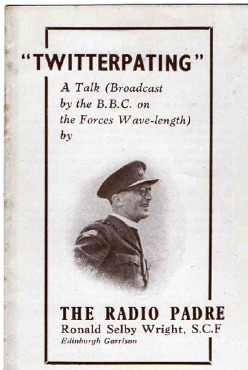
The cover of a pamphlet of one of the Radio Padre's talks. This one was all about relationships between soldiers and women in the unusual circumstances created by the war.
On the 20th he visited Coldingham Moor and an ack ack battery, Archerfield (full of Poles), passed Cockburnspath and the road to Skateraw before heading to Dalkieth Palace where he met the O.C. Battery of Searchlights at his H.Q. there. His travels to remote ack ack and searchlight sites took him all over Scotland boosting morale and meeting old friends as he moved around.
In the autumn of 1942 he was appointed Senior Chaplain to the 52nd (Lowland) Division of the British Army and returned to Scotland for a longer spell. His role, however, was to take an unexpected turn. It was discovered that his talks were being listened to by PoWs in Europe and M.I.9 was keen to make use of that in order to pass messages to them. Selby Wright had to continue his talks (originally meant to only last for six months) and they were subsequently used as an intelligence conduit.
In November he was sent on an overseas posting and was able to visit Cairo and Jerusalem. He wasn't allowed to stay out there long, however, and was recalled to the UK to resume his Radio Talks, all 'loaded' now as D-Day loomed. Soon, however, in a very exhausted condition, he experienced another overseas posting, this time to Italy. This too was swiftly altered as he was sent to an Indian division near Florence. He saw out the war with it. While on active service, he kept in touch with all his friends in the Club through letters and through the Club newsletter, 'The Canongate Chronicle'. Through it he exhorted them to 'Remember the Old Firm and carry on.' Selby Wright returned to the Canongate in December 1945, "…strangely lonely, rather lost and very tired." (8)
The war years - The Club
The war didn't stop the Club from continuing its activities in Edinburgh, though not in East Lothian since the coast was largely out of bounds. The fighting removed many of the main actors from active participation (including, of course, Selby Wright) and the Club was not immune to loss. When it was all over six Club members had been killed. Both they and Selby Wright are commemorated by a small monument surmounted by a cross and erected on a hill above the camp. This is now positioned near the site of the original Scott Hut on the promontory to the left of Skateraw harbour.
"Good night Sir, I'll see you in the morning"
One death, in particular, appears to have struck him and the members hardest of all, that of Jimmy Dalgleish. Jimmy was a former head boy of the Club and had joined up to become a Sergeant in the R.A. He won an MM at Dunkirk and later, while the country prepared for the D-Day landings, he was able to join Selby Wright to take part in one of the latter's radio broadcasts from Bedford. He was killed that very evening putting out incendiaries and it is his poignant last words to his friend and mentor that are engraved on the memorial to the Canongate Club at Skateraw: "Good night Sir, I'll see you in the morning."
8. R. S Wright, 'Another home', (Blackwood & sons, Edinburgh, 1980), p. 157
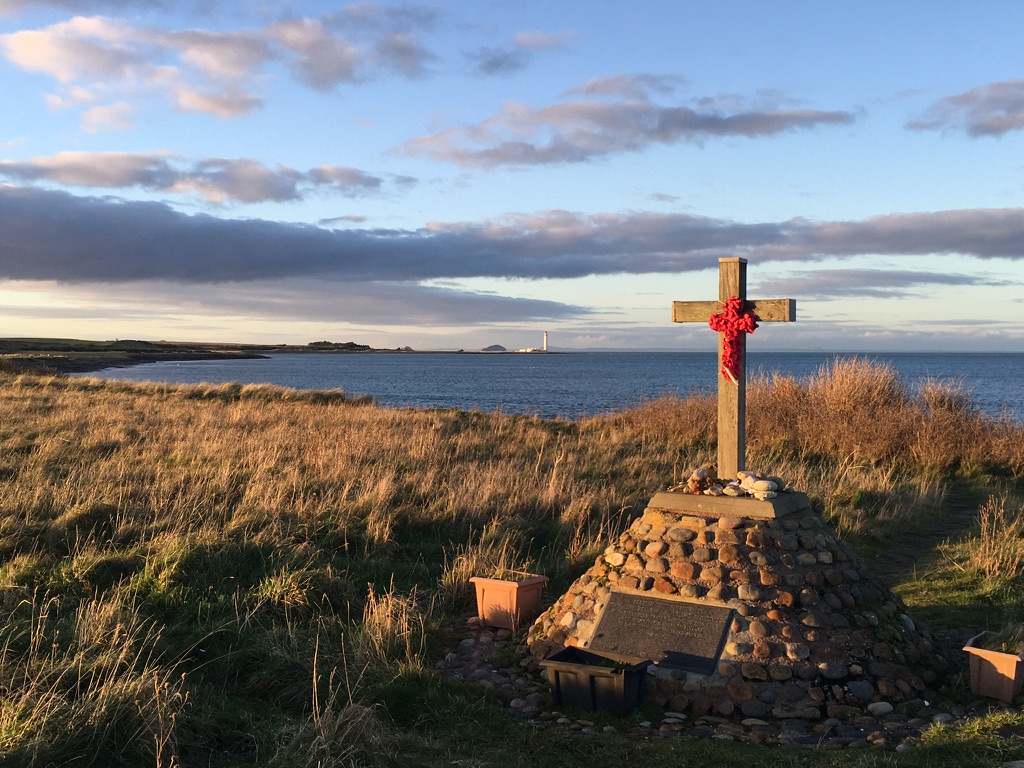
The memorial cross at Skateraw to both Selby Wright and the Canongate Club and to its members who died in the war. Looking west. The individual stones were gathered by the boys, the number found and used according to their age. (D. Haire)
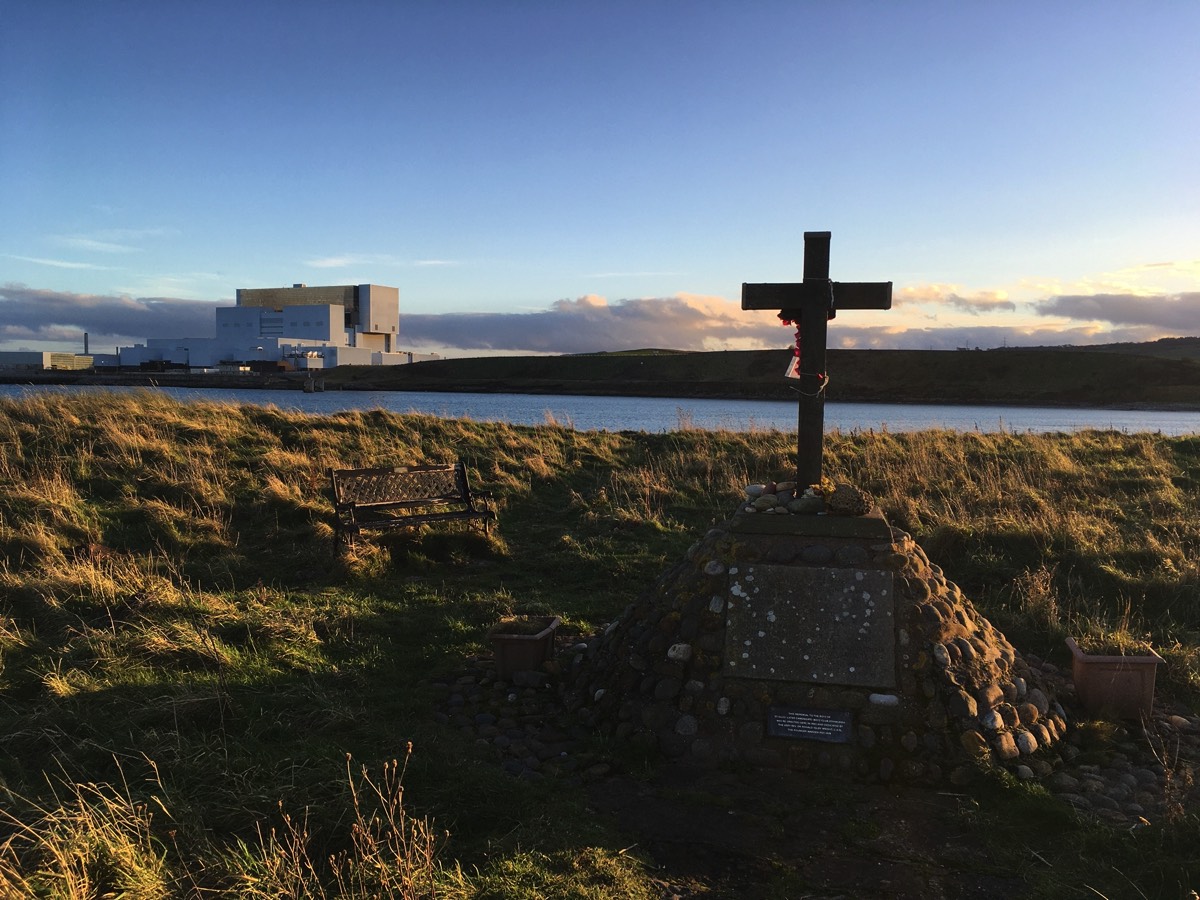
The memorial cross, looking east. This was originally erected by the 7/9th Highlanders Battalion The Royal Scots on a nearby hill, named 'Memorial Hill' by the Club.
(D. Haire)

Dedication to Selby Wright at Skateraw.
(D. Haire)

Tablet listing those members of the Canongate Boys' Club who lost their lives during the war.
Aikengall
The Club renewed its association with the county in 1946 when Selby Weight installed fifty former air raid shelter beds in the farmhouse at Aikengall, lent to him by the Bowe family. Aikengall was situated up a quiet valley from the village of Oldhamstocks and camps were held there at all times of the year, winters included. The camps were busy affairs (over two hundred participated in one year) and their shared experiences clearly left their mark. Walking was an omnipresent activity at a time when walking ten miles to the sea at Skateraw, or over the moors and back, was little remarked upon for even urban ten year olds.
There were competitive sports nights with St Giles or Dalry Boys' Clubs and visits were made to the outdoor pool at Dunbar. A barn was turned into the Club's chapel and there were log fires and numerous sing-songs. In the days when winters were winters, the walks across the countryside took on a magical quality for the town-dwelling Club members. On some occasions the boys were shown 'Talkies', to which local farmers and herds were invited, and they sang at the Christmas service at Oldhamstocks church, all dressed in cassocks and ribbons with the Club crest. Detachments of Boys Brigade also attended the camps.
These first visits to East Lothian after the war appear to have been a much needed opportunity for Selby Wright to restore his own much depleted reserves of energy.
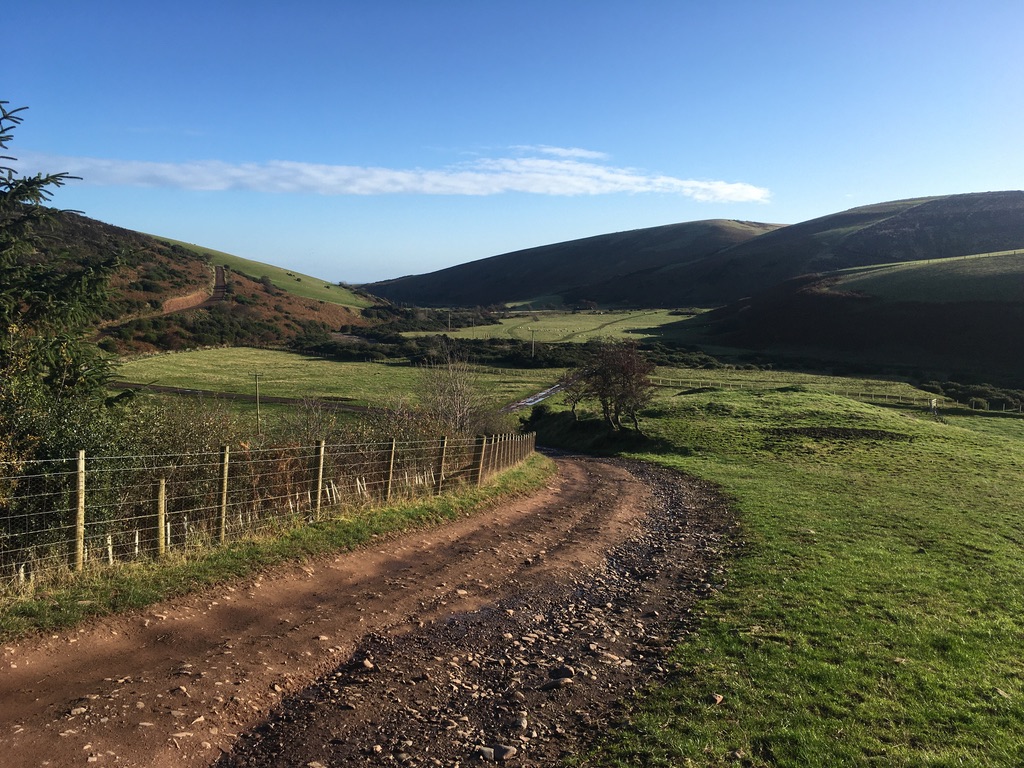
Looking east from Aikengall Farm.
(D. Haire)
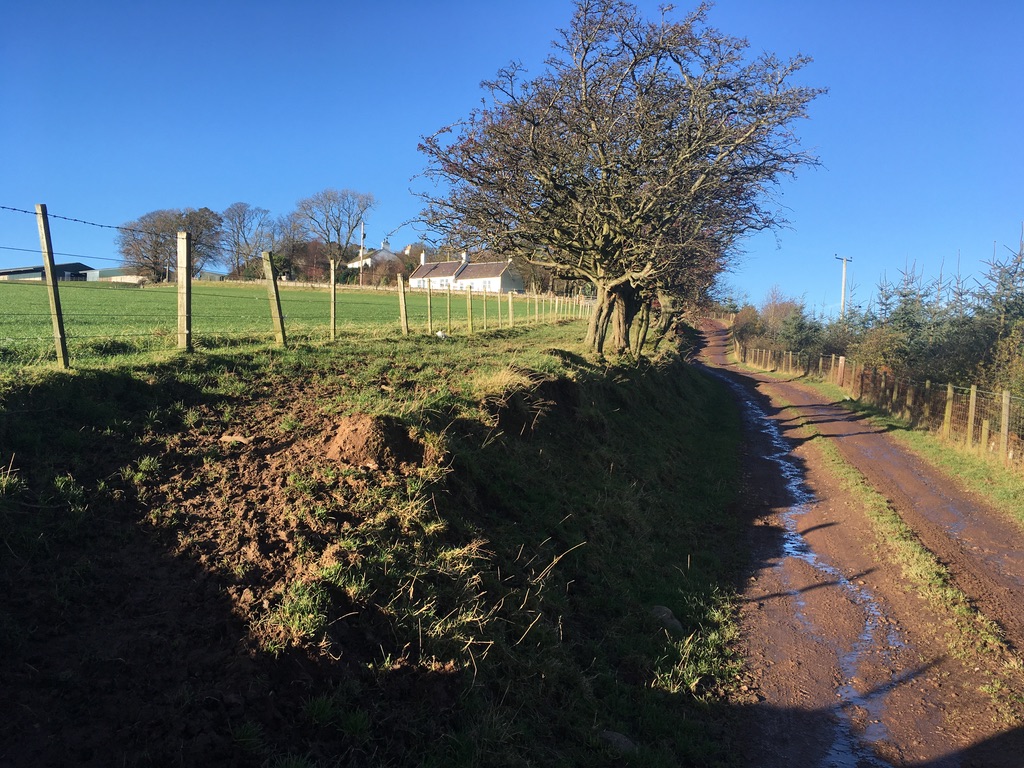
Up the lane to Aikengall Farm.
(D. Haire)
The final move the Club made was to the Skateraw site where, in 1947, Mr David Bowe allowed the Club to erect a Nissen hut and others on the site I've described above. There it remained until, in 1977, the construction of Torness Nuclear Power station nearby necessitated the purchase of the land by the Electricity Board. The construction rather spoiled the rural peace of the area, anyway. The lime kiln is, of course, still there and so is a cross erected later in memory of the Club's war dead and Selby Wright. All other traces have been overcome by nature. The John Muir Way now runs slap bang through the area where the Canongate Club had its camp.

The Memorial Cross draped with the Canongate Boys' Club flag.
Selby Wright retired from the Canongate church in September 1978 and brought the Canongate Boys' Club to a close the following March. The ongoing depopulation of the Canongate area had deprived the Club of its raw materials and it had to give up its occupancy of Panmure House and finally of the Harry Younger Hall nearby.
Selby Wright's leadership of the club and his contributions to its success were finally recognised by a surprise dinner in the Café Royal, when Selby Wright was lauded by past members representing the many years of the club from 1927 to 1977. In a telling if simple way, the importance of East Lothian to the club is shown in, of all places, the dinner's menu! It included "Skateraw Seafood Cocktail, Cream of Mushroom soup a la John Sellars [and] Sirloin Steak Aikengall style." (9)
9. R. S Wright, 'Another home', (Blackwood & sons, Edinburgh, 1980), p.260
"Camp was always the best room in the Club." Selby Wright.
Photographs of the Canongate Boys Club activities: 1944-1948
If anyone comes across these and recognises faces, please do get touch via the Contact Us email page. This would be especially important for Anne, who doesn't have any photographs of her Uncle and doesn't know what he looks like.
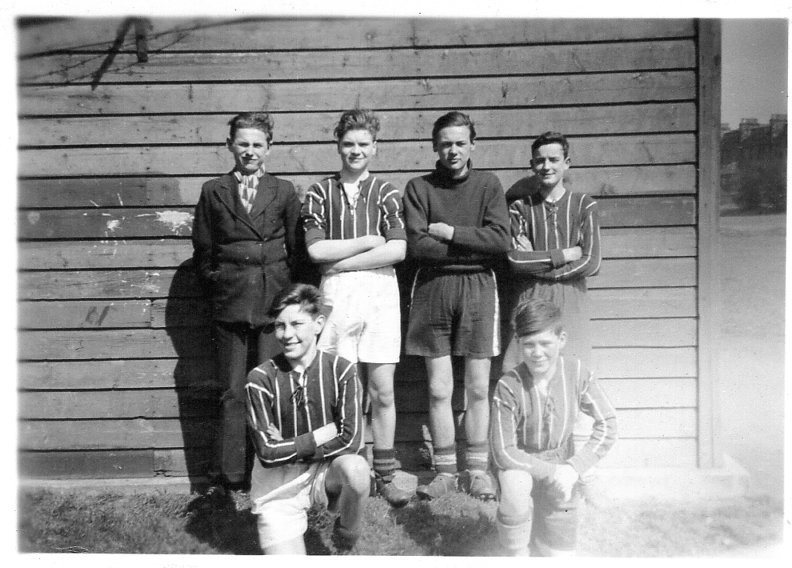
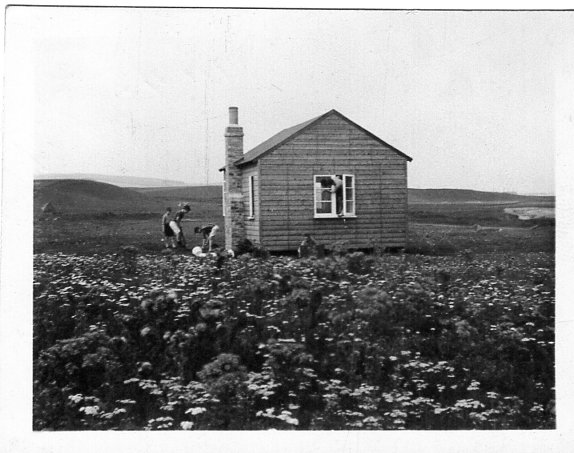
5-a-side football tournament, Harrison Park, Edinburgh, July 1944
The Hut, Skateraw,1944
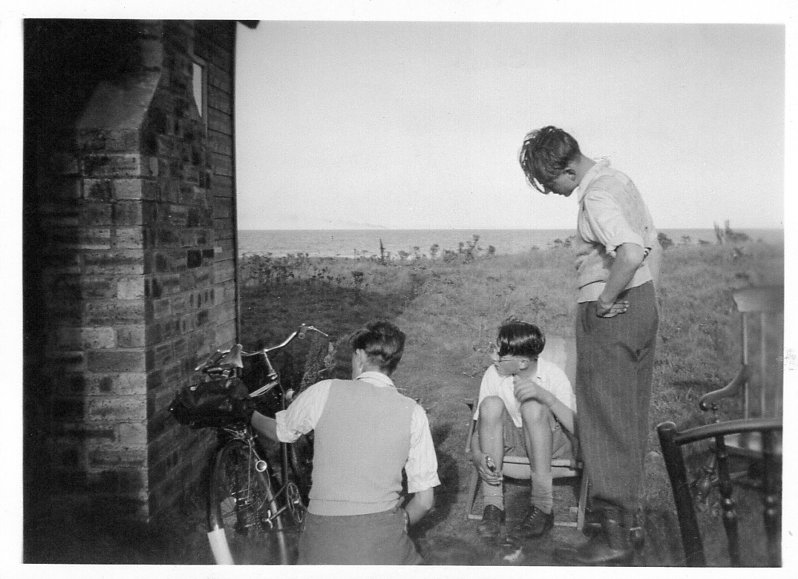
Fixing a bike by the hut at Skateraw in June 1945

Ashiesheil Camp, July 1945.
Ashiesheil is near the river Tweed, west of Caddonfoot in the Scottish Borders
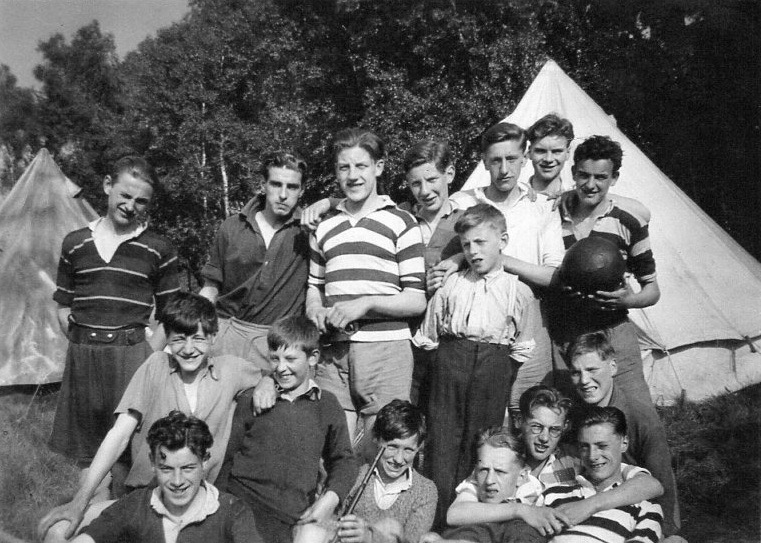
Ashiesteil Camp, July 1945
Near the Tweed , west of Caddonfoot, The Scottish Borders

At the Hut, Skateraw, June 1945
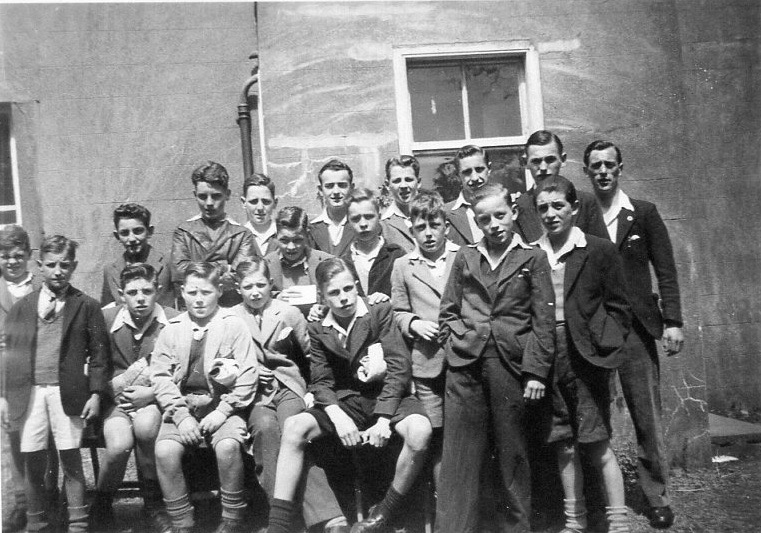
Aikengall, July 1946. It looks as though some are preparing to go for a swim. Perhaps at Skateraw?
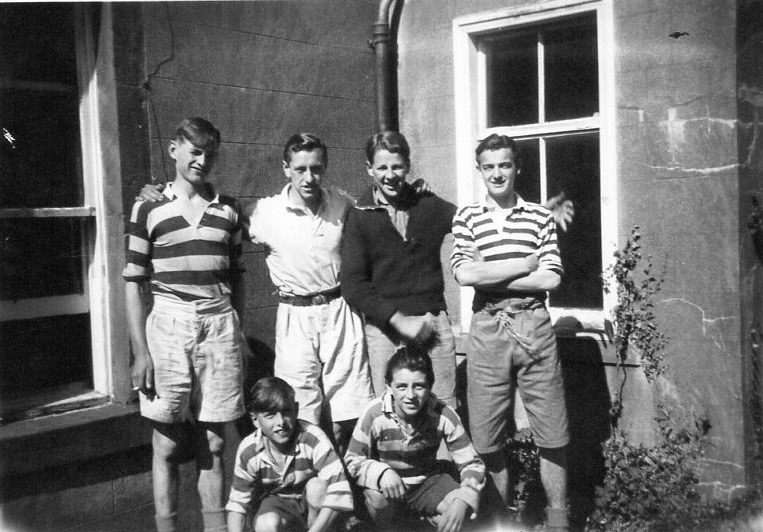

Aikengall, July 1946
Skateraw camp, July 1946
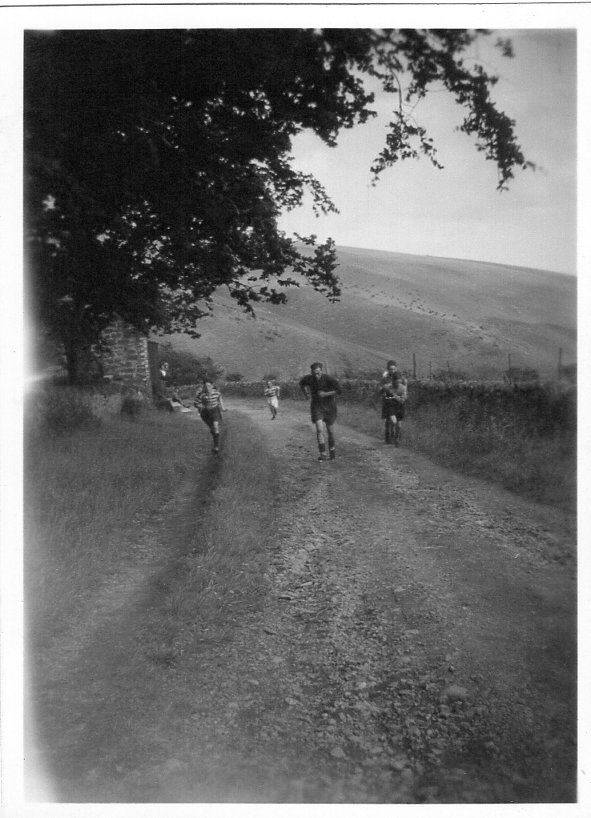
Cross country race, Aikengall, July 1946
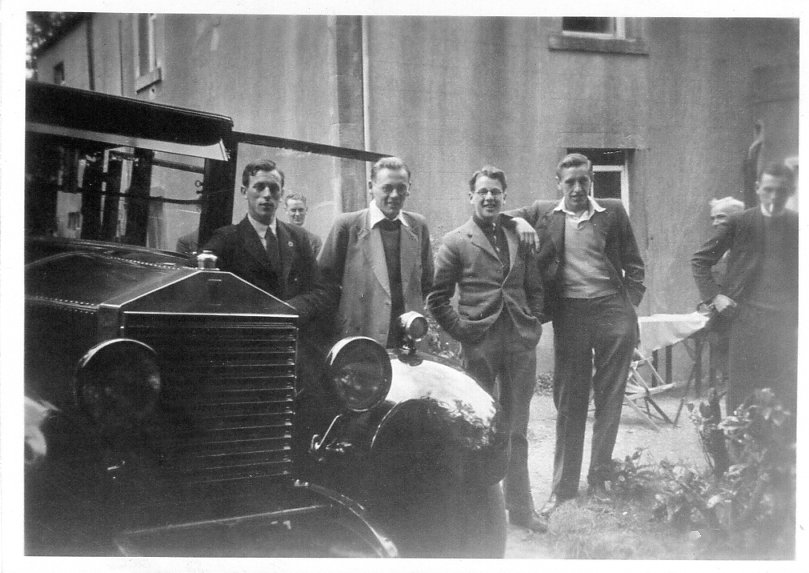
Leaving for home, Aikengall, July 1946

At the hut on a weekend camp in April, 1947. Notice the basic camp washing facilities to the right.
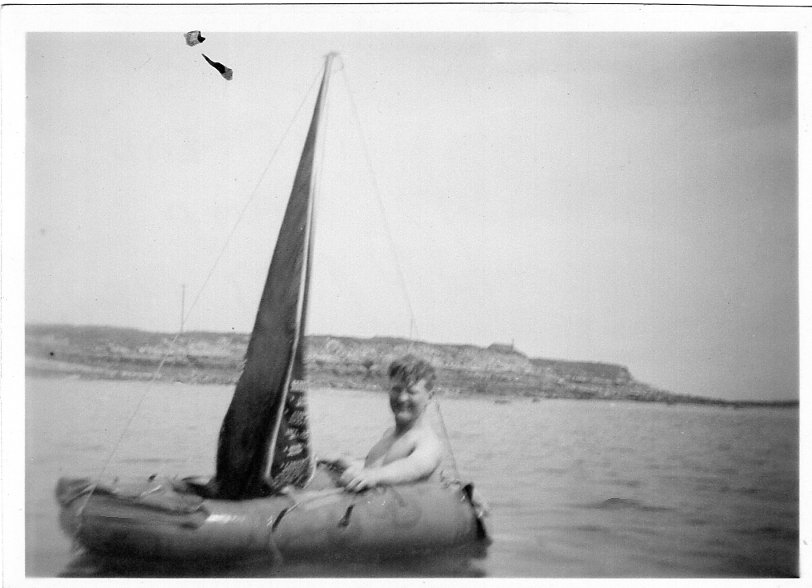
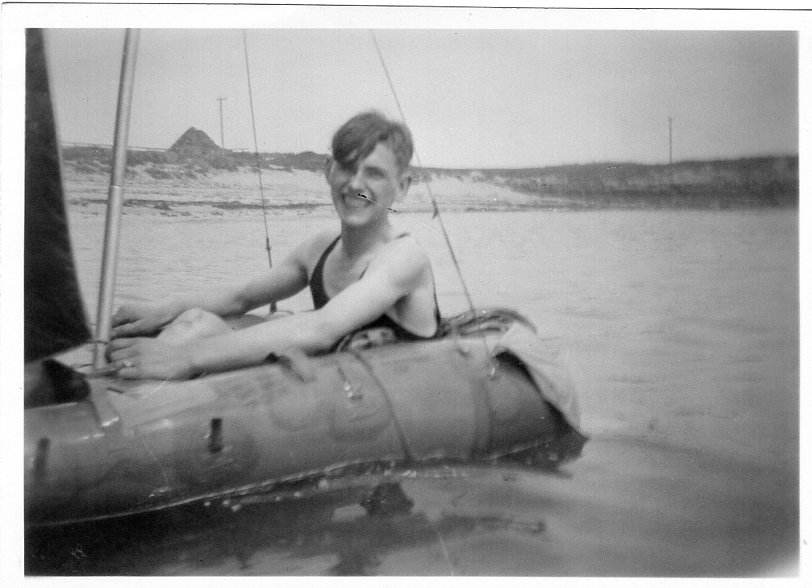
Boating at Skateraw at a weekend camp, May 1947
Boating at Skateraw at a weekend camp, May 1947
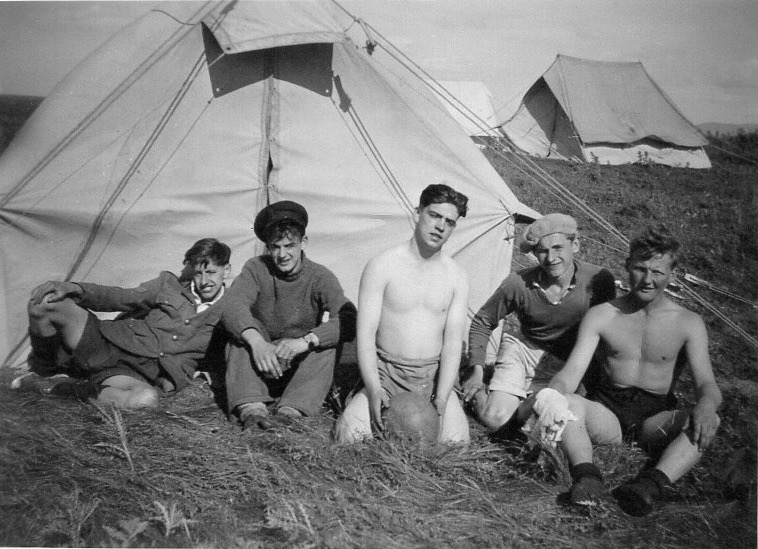
Under canvas at camp at Skateraw in July 1947
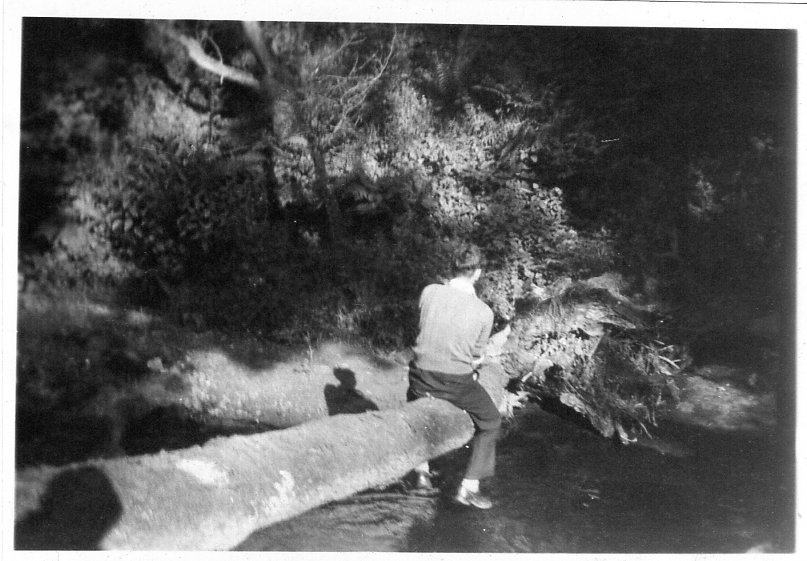
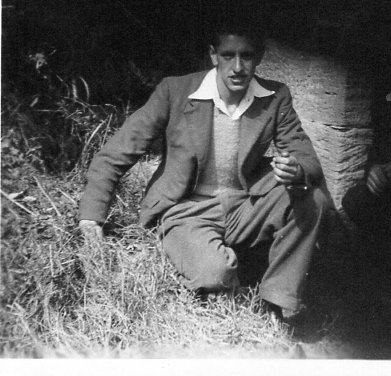
Weekend camp, Humbie, August 1947
A member by the river, Humbie, August weekend camp, 1947
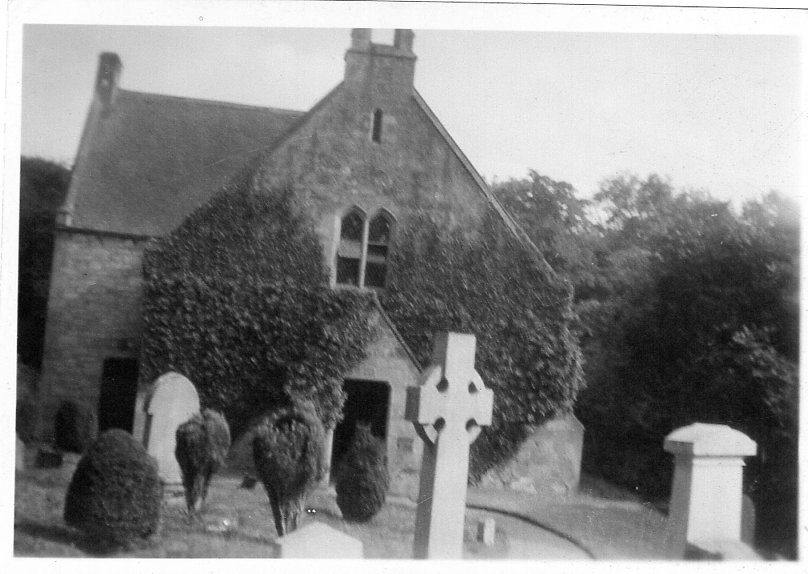
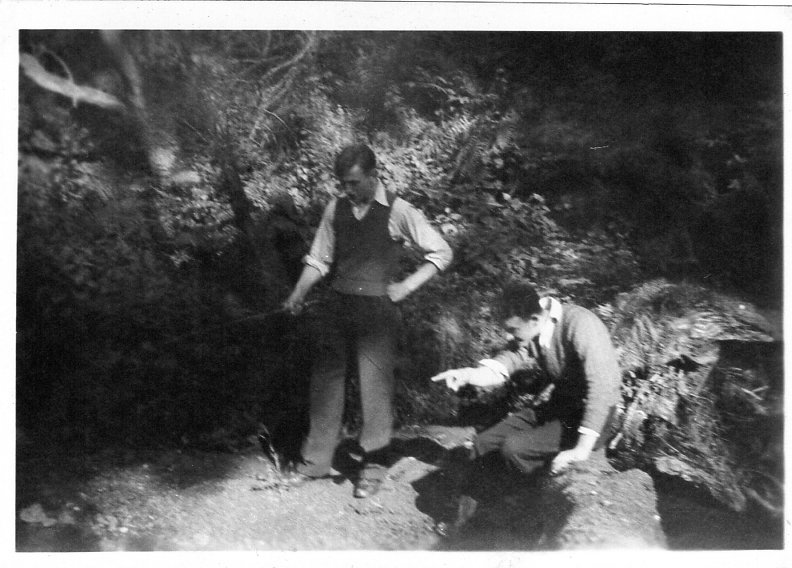
Humbie Church, 1947
By the river, Humbie weekend camp, August 1947
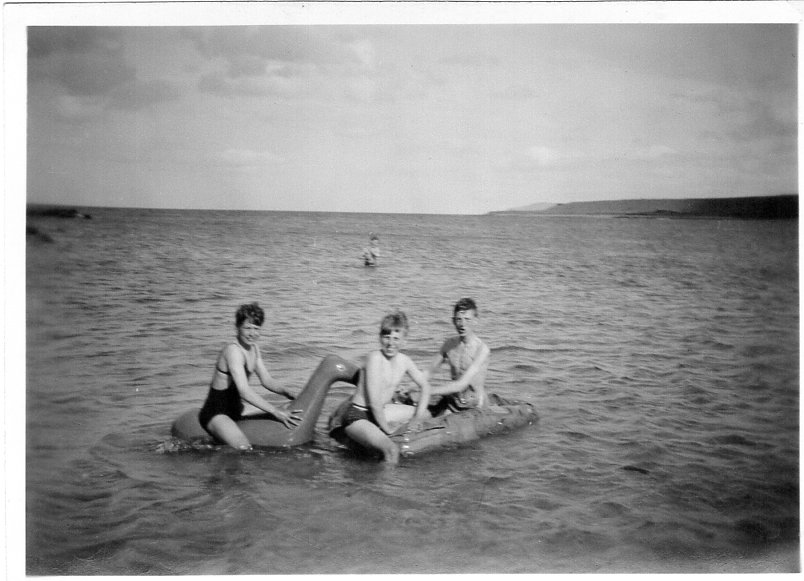
Fun and games in the sea at Skateraw, July 1947
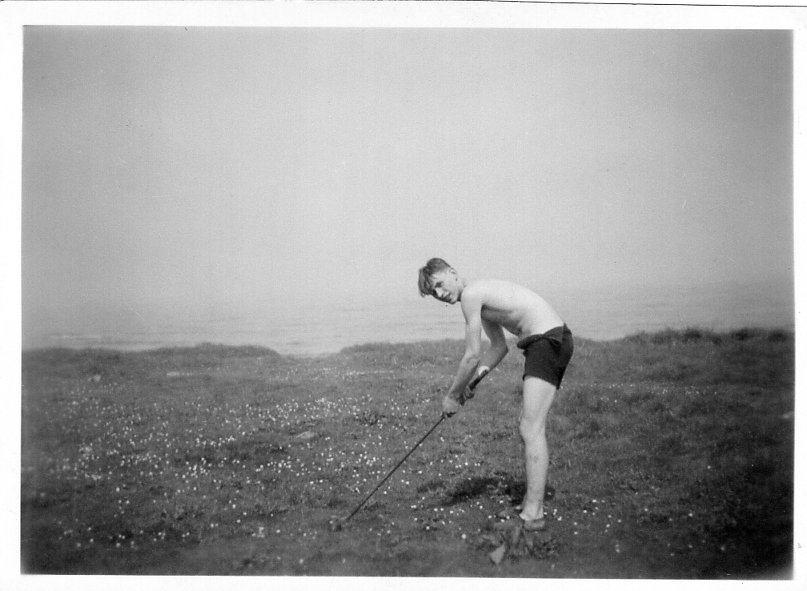
N. Sandells practising with a driver at Skateraw in July 1947
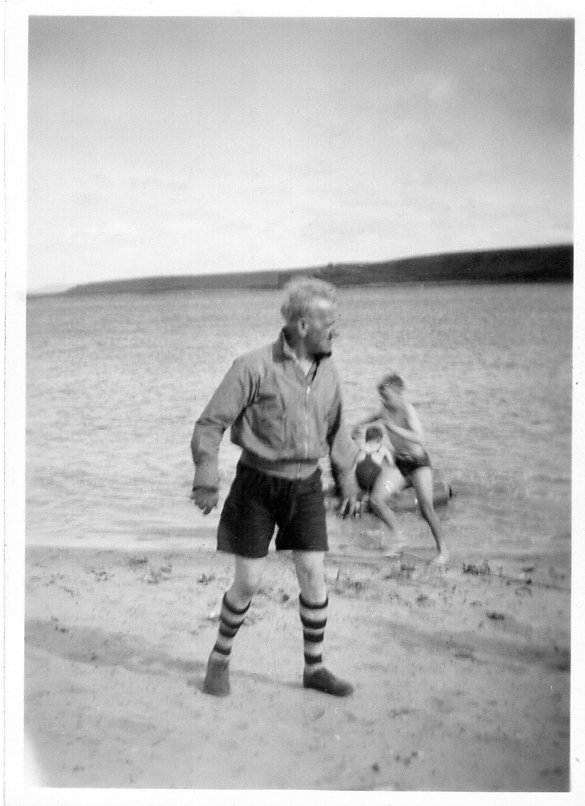
Jimmy Prior at the camp at Skateraw in July 1947. One assumes he was one of the adult helpers at the time.

A smiling group of young cricketers at Skateraw with the Hut and tents in the background in July 1947
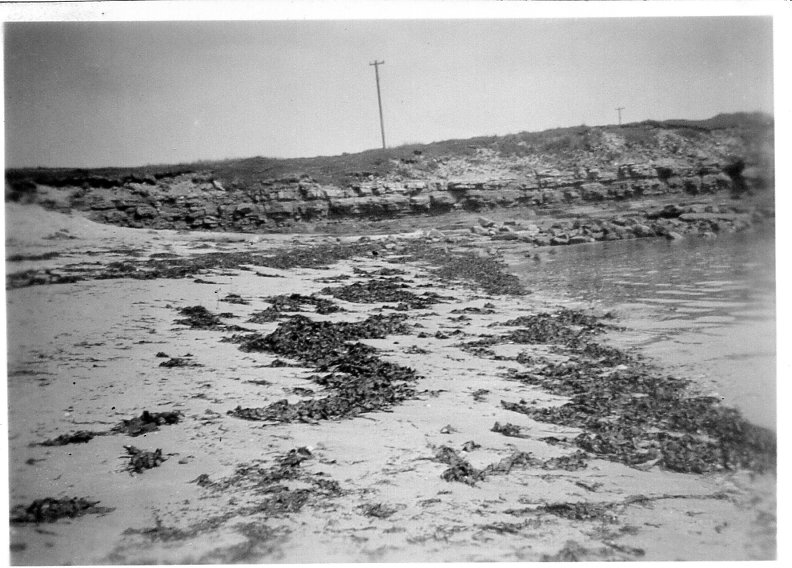
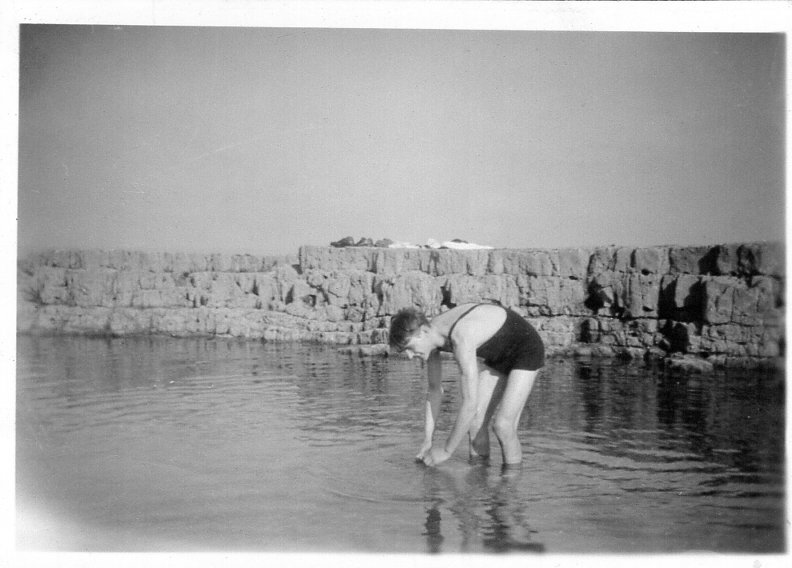
The beach at Skateraw, 1947
Bathing at Skateraw, August 1947
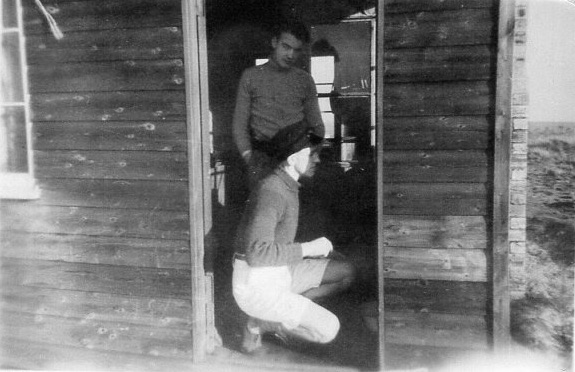
At the Hut at Skateraw in March 1948. He has the look of someone trying to light the Primus!
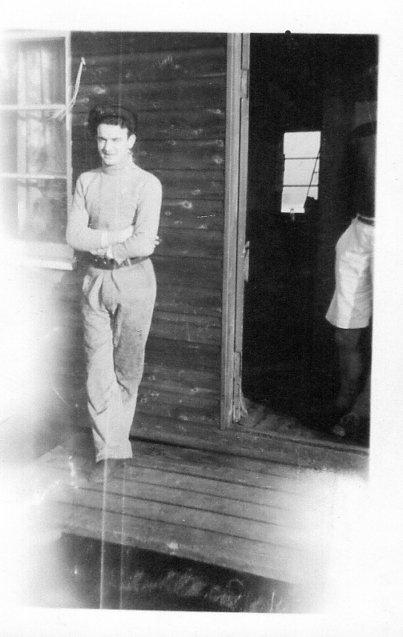
A young man standing by the Hut at Skateraw in 1948

The famous Hut, Skateraw, 1948

